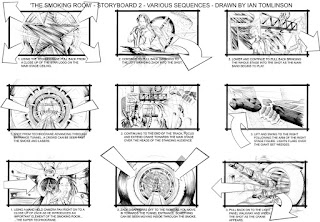Editing

Editing During the pre-production stage, a storyboard is created to visualise how the visual and auditory parts will combine to create the scene. The storyboard will predict how each unit of action will happen through listing the desired shot sizes and angles. This will then become a sequence of shots. Each action that is shot must not have any continuity errors. For example, body part positioning, movements, costume, objects and mise-en-scene elements must be identical to its prior shot. Intercutting can also be useful for portraying two different storylines at the same time, aiming to highlight the impact. It is also a useful way of creating tension.
